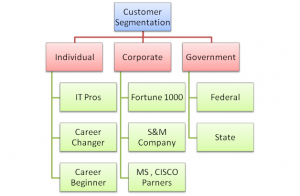If you want to be on the top of an organization, you must understand basic finance. Finance is critical in the successful running of an organization. The U.S. Small Business Administration organization reports that 50% of small businesses fail within the first five years of operation. In the book, “Small Business Management,” Michael Ames lists a number of reasons for these failures. Half of the reasons cited are related to finance, namely:
- Insufficient capital
- Over-investment in fixed assets
- Poor credit arrangements
- Personal use of business funds
Since business survival depends so much on the understanding of financial issues, it is imperative that business leaders have a good grasp of financial concepts. A lack of understanding can lead to poor decision-making with regards to money, which may ultimately lead to the untimely demise of a business.
Finance Basics
At a very basic level, there are two income flows within your business. One is revenue (money coming in), and the other is cost (money going out). Revenue should not be confused with profit. Profit is the money that your business makes when you deduct cost from revenue. Revenue and profit are not one in the same. To achieve a profit, revenue must always exceed cost. Good business leaders will always be asking themselves the following three questions:
How can I increase revenue?
Increasing revenue be achieved in a number of ways. For example, raising the price of a product or service is one method of bringing in more revenue. Businesses considering taking this approach need to be sure that their customers will be willing to pay the new price before raising the current price. Another common business approach is to raise Average Revenue Per Unit (ARPU). A unit is a customer, so the idea behind this approach is to increase the amount of products or services that you are selling to each customer. This is a popular method because it is usually cheaper to sell to existing customers than to find new ones.
How can I decrease cost?
Decreasing cost can be accomplished by either cutting back or improving efficiency. To cut costs, you may choose to reduce staff, spend less on marketing, or slash the company’s training budget among other options. When you decrease costs by cutting back in any area, you need to be sure that you can continue to offer your customer a product or service that they will be happy with. Cutting back and losing customers at the same time is not the goal. On the other hand, improving efficiency is a great way of decreasing cost. By looking at efficiency, you may find that you only need two people instead of three to achieve the same goal. Often, this entails having employees work in a new, more efficient way.
How can I improve cash flow?
Improving cash flow is all about optimizing the time when you take money into the business and when you pay it out. Good finance managers know that most bills can be paid up to ninety days without incurring penalties, and so they will pay at ninety days in order to gain as much interest as possible on the funds. Conversely, they will chase clients to get money coming in much earlier than ninety days. The goal is to keep money in your account for as long as possible so that interest accrues.
Examples
Here is what we have covered in top level with you earlier today:
P&L Statement
The Profit and Loss Statement shows funds coming in (revenues) and those leaving the business (costs). In this example, there are two main revenue streams – that of tuition and those associated with other related items such as course materials (books).
Costs are broken down into different sections. There are costs associated directly with providing the service. These costs include instructor fees, printing of course materials, renting of a classroom, and provision of food and accommodation to clients. Other costs include marketing and sales, salaries, utilities bills and more.
Revenues

Read more »







